|
Rushden
Tour
Church End (Click
on image for larger picture) |
|
|
|
|
|
Southern
Green
|
Treacle
Lane
|
Mill
End
|
|
|
|
|
|
We start our tour of the
village at Little Thatches. One of the first houses you come to when
entering Rushden. It is situated on the left hand side of the road opposite
Treacle Lane.
|
|
|
|
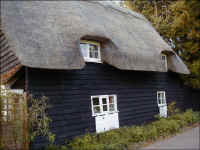 |
|
|
|
|
Little
Thatches |
|
|
|
Little Thatches is
typical of many of the houses in Rushden being a weather boarded, timber
framed house dating from the early 17th century. The shutters were
to keep the cattle from putting their horns through the windows when being
driven to market. Originally it and the surrounding houses were all part
of the same complex.
The late gravedigger,
Tommy Chapman remembered when there was a barn at the back of the house
where a large drum probably dating from the Crimea or earlier was kept.
The boys of the village would beat this around the village on New Year's
Day and collect money from the villagers. He also remembered selling the
two old ladies who lived here sparrows at 6d a time to make sparrow pie! |
|
|
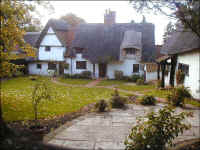
|
|
|
The romantically named Windmill Cottage
is in fact named after a 1930's type metal generator windmill, though
there must have been a flour mill at some time in the village to give Mill
End its name. |
|
|
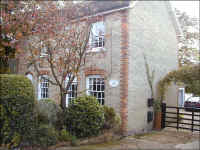
|
|
|
|
The Old
Post Office |
|
|
|
The Old Post Office
(to be renamed the Old Consignia!!) is a late Victorian building. It ceased to function as a business in the
1970's. The shop was
entered by a door in the middle at the front with a brass bell above it
and a step down. It sold a little bit of everything! Richard Jones, who
now lives in New Zealand, tells us "The Old Post Office was called
"Berea Cottage" when I lived there with my mother and sister
and with my Uncle Albert Stubbs who was Postman in the village before
Ernie Wyatt started in 1950ish. He was married to Ethel from the Row
Green "Williamson's".
|
|
|
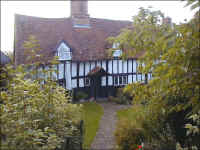
|
|
|
|
8,
Church End |
|
|
|
The house after the Old Post
Office on the village tour is 8,
Church End and was formerly the Rose and Crown Public House. It dates
from the sixteenth century and is believed to be the house where Adolphus
Meetkerke, Dutch Ambassador to Elizabeth I, lived when he first came to
Rushden, before he built Julians. Part of the house dates from the
eighteenth century, as a date etched on a brick in the inglenook
testifies. It is under this part that the cellar is situated, so we can
assume that it was from this time that it served the village as a pub
until the early Twentieth Century. (Tommy Chapman remembered getting beer
there for his father.) |
|
|
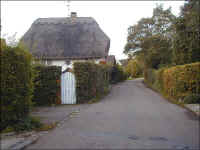
|
|
|
|
|
|
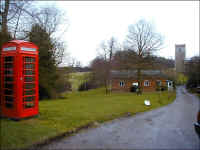
|
|
|
|
The
Village Green |
|
|
|
The Village Green is
under the stewardship of the Trustees of the Green. It is here that
Rushden holds its annual fete. In Summer, Village Hall events, such as
yoga and the WI, spill over onto its grass. A bench at its top gives
views along Bennet's Lane and next to the bench we have managed to keep
our original, red, phone box. The flag pole is occasionally replaced by a
maypole. The flagpole is used to fly the flag of St George on 23rd April
and the Union Jack at appropriate times of the year. At its base, in
November, individual poppies and crosses are placed by villagers in memory
of family members. |
|
|
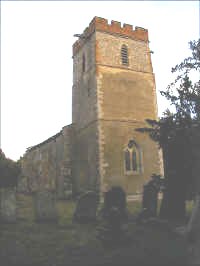
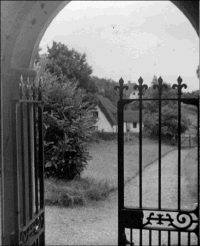
|
|
|
St
Mary's Church with view from the door in the 1940's
|
|
|
Rushden
Church continues to serve as a centre of the village community.
Although not very large, it is very welcoming. Inside the Church can be
seen a statue of the Virgin Mary sculpted by Percy Portsmouth, who also
sculpted his wife's tombstone which can be seen in the graveyard. In the
field behind the church, can be seen the house platform to the original
mediaeval manor house. |
|
|
|
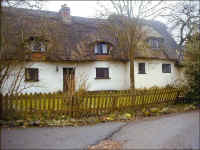 |
|
|
|
|
|
|
|
|
|
|
|
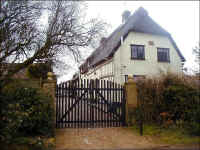
|
|
|
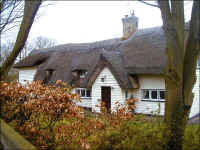
|
|
|
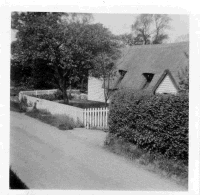
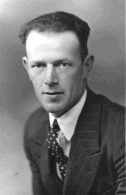
|
|
|
Church End Cottage, Phil
Warner's old house with photo of Phil Warner in 1944 (with thanks to
Clive Semple) |
|
|
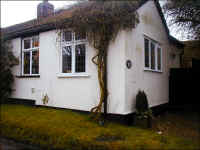
|
|
|

|
|
|
|
Rushden
Walks |
|
|
|
Rushden is surrounded by
farmland, mainly arable. There are several enjoyable walks through fields
and woodlands. Deer are frequently seen, woodpeckers can be heard tapping
at hollow trees and owls nest near Friar's Wood. |
|
|
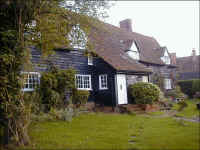
|
|
|
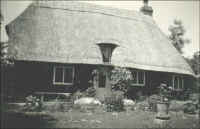
|
|
|
Youngloves Cottage
|
|
|
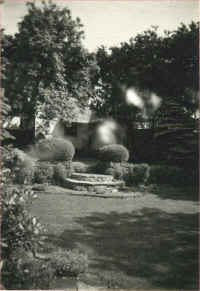
|
|
|
Garden in Rushden
|
|
|
|
|
|
Southern
Green
|
Treacle
Lane
|
Mill
End
|
|
|
|
|

















